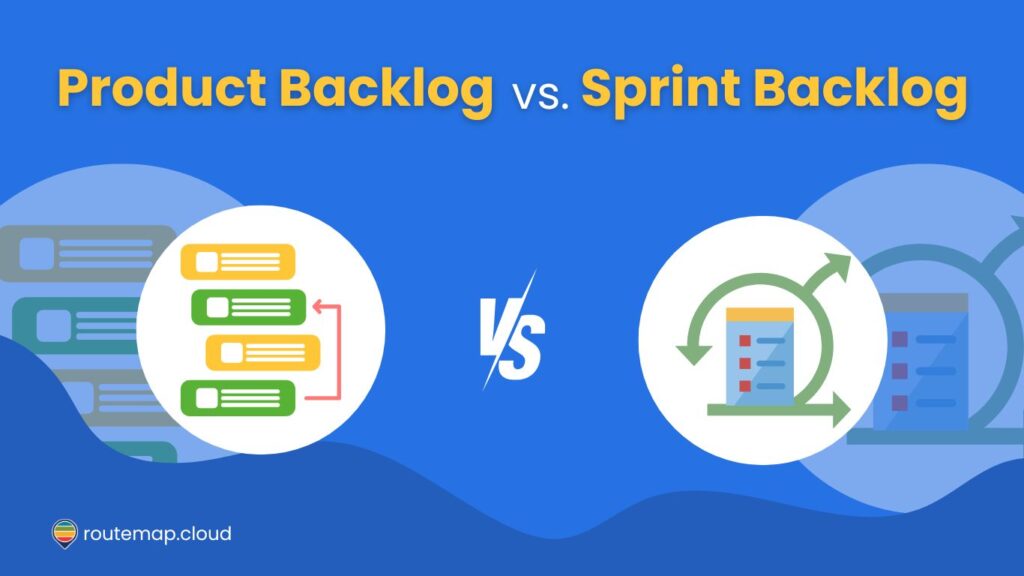In Agile Scrum methodology, two types of backlogs play an important role in managing the development process: Product Backlog vs Sprint Backlog. While both serve to organize and prioritize work, they are distinctly different in terms of scope, ownership, and purpose. Understanding the differences and how these two backlogs work together is essential for any team aiming to deliver high-quality products efficiently and iteratively.
In this article, we’ll dive into the characteristics of both backlogs, explore how they relate to each other, and highlight some best practices to ensure that both are effectively managed.
What is the product backlog?
The Product Backlog is essentially a comprehensive, prioritized list of everything that could be needed in the product. The living document defines the features, functions, enhancements, and bug fixes required for the product’s development.
The Product Backlog is continuously refined and updated based on customer feedback, market changes, and business needs. This backlog helps provide a long-term vision for the product, serving as the roadmap for future work.
Key features of the product backlog:
- Dynamic & evolving: The Product Backlog is never “finished.” It’s constantly refined through feedback, discovery, and testing.
- Prioritized: The items in the backlog are ordered by priority, with the most important and valuable tasks at the top.
- Wide scope: It includes everything from high-level features to bug fixes, technical debts, and even enhancements.
Learn more about the Product Backlog and How to manage it.
What is the sprint backlog?
The Sprint Backlog is a subset of the Product Backlog. It represents the work that the Scrum team has committed to completing during a specific sprint.
A sprint is typically 1 to 4 weeks long, and the Sprint Backlog focuses on short-term goals that align with the sprint’s objective. Unlike the Product Backlog, which contains a broad spectrum of work items for the product as a whole, the Sprint Backlog is detailed and specific to the work planned for the current sprint.
Key Features of the Sprint Backlog:
- Short-term focus: It contains only the items selected from the Product Backlog that the team believes can be completed within the sprint timeframe.
- Detailed tasks: The Sprint Backlog includes user stories and tasks that break down those stories into actionable steps.
- Fixed during sprint: Once a sprint begins, the Sprint Backlog is typically fixed, meaning no new items can be added or removed during the sprint (unless absolutely necessary).
Learn more about the Sprint Backlog.
The difference between product backlog and sprint backlog
While both backlogs help manage and organize work, they have different purposes and distinct characteristics.
| Product Backlog | Sprint Backlog | |
| Ownership | The Product Owner is responsible for the product and prioritizes items based on business value, stakeholder feedback, and strategic goals. | The Development Team owns the Sprint Backlog and breaks down those items into actionable tasks, estimates the effort, and decides how to execute them. |
| Scope | The Product Backlog represents the entire scope of work for the product over its entire lifecycle. | It is more focused and contains only items the development team has committed to working on during the current sprint. |
| Purpose | Provide a clear, evolving roadmap for the product’s development. | Break down the high-level goals from the Product Backlog into smaller, actionable tasks that can be completed during a single sprint. |
| Content | Includes a variety of items that contribute to the product’s overall development. | Includes the specific items selected for the sprint, along with tasks that break those items down into smaller, actionable steps. |
| Flexibility | It is highly flexible and continuously evolving. The Product Backlog is reviewed and updated regularly during Backlog Refinement (or Grooming) sessions. | The Sprint Backlog is relatively fixed once the sprint begins. After the Sprint Planning meeting, no new items should be added unless there is a change in the sprint’s scope or priority. |
Final thoughts
Product Backlog vs Sprint Backlog, both are crucial to the success of a Scrum project, but they serve very different purposes.
The Product Backlog provides a strategic, high-level overview of the work that needs to be done throughout the product’s life. Meanwhile, the Sprint Backlog focuses on the tactical, short-term tasks that the team will complete during the current sprint.
By understanding and respecting their differences, Scrum teams can remain aligned with the overall product vision while focusing on delivering incremental value in each sprint. This balance can empower Scrum teams to deliver products that meet customer needs efficiently and effectively.




